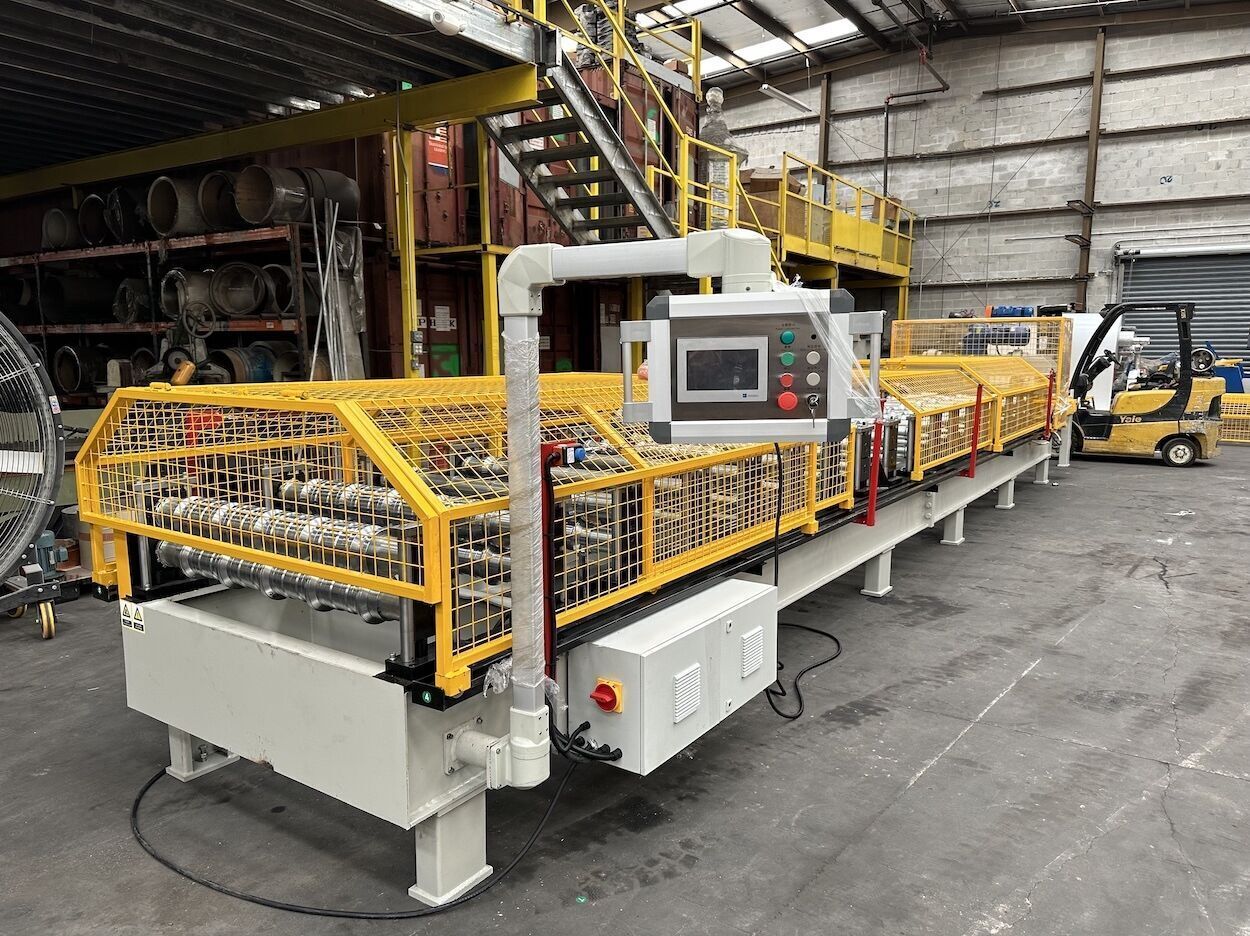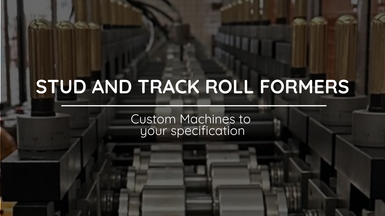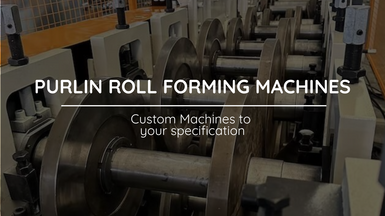
Software solutions for roll forming machines
Software solutions have transformed roll-forming machines into powerful metal fabrication tools
Posted on Monday, July 10, 2023
Roll-forming machines have long been at the forefront of metal fabrication, enabling the production of various shapes and profiles with remarkable precision and efficiency. However, integrating software solutions has taken roll-forming to new heights, transforming how these machines operate and enhancing their capabilities.
This blog will explore the software solutions revolutionising roll-forming machines, providing manufacturers with advanced features, increased productivity, and improved quality control.
CAD/CAM Software for Design and Simulation
Computer-Aided Design (CAD) and Computer-Aided Manufacturing (CAM) software have become essential tools in roll forming. CAD software allows engineers to design complex profiles, calculate material requirements, and create detailed 3D models. CAM software, on the other hand, takes the CAD data and generates tool paths and machine instructions for the roll-forming process. These software solutions enable efficient design iterations, precise visualisation of the final product, and seamless integration between design and production.
Simulation and Virtual Prototyping
Software solutions provide simulation capabilities that allow engineers to test and optimise roll-forming processes before physical production begins virtually. Virtual prototyping enables the identification of potential issues, such as material deformation, excessive stress, or part misalignment, saving time and costs associated with trial and error. By simulating the roll-forming process, manufacturers can refine the parameters, adjust tooling, and optimise material usage for improved product quality and reduced waste.
Real-Time Monitoring and Control Systems
Software solutions enable real-time monitoring and control of roll-forming machines, ensuring optimal performance and quality control. Advanced sensors and data acquisition systems collect data on key parameters such as roll position, material thickness, line speed, and temperature. This data is then analysed in real-time, allowing operators to detect abnormalities or deviations from the desired specifications. By closely monitoring the process, manufacturers can make immediate adjustments, minimising downtime and enhancing the overall efficiency of the production line.
Integration with Production Management Systems
Software solutions for roll-forming machines can seamlessly integrate with broader production management systems, providing a centralised control platform. These integrated systems enable manufacturers to track orders, manage inventory, schedule production, and monitor overall equipment effectiveness (OEE). Manufacturers can optimise resource allocation, reduce lead times, and improve overall production efficiency by having a comprehensive view of the entire manufacturing process.
Remote Access and Troubleshooting
Remote access capabilities offered by software solutions enable manufacturers to monitor and control roll-forming machines from remote locations. This feature is particularly valuable for multi-site operations or when experts need to provide support or troubleshoot issues remotely. Remote access allows for faster response times, minimises machine downtime, and reduces the need for on-site visits. Additionally, software solutions can facilitate remote software updates, ensuring that machines are equipped with the latest features and enhancements.
Data Analytics and Predictive Maintenance
Software solutions enable the collection and analysis of vast amounts of data generated by roll-forming machines. Data analytics techniques can identify patterns, trends, and anomalies that provide valuable insights into the production process. Predictive maintenance algorithms can be applied to anticipate potential equipment failures or maintenance needs, allowing manufacturers to schedule maintenance activities proactively and avoid unplanned downtime.
Software solutions have transformed roll-forming machines into powerful metal fabrication tools, enhancing capabilities, increasing productivity, and improving quality control. CAD/CAM software, simulation and virtual prototyping, real-time monitoring and control systems, integration with production management systems, remote access, and data analytics have revolutionised the way roll-forming processes are executed and managed. By embracing these software solutions, manufacturers can achieve higher efficiency, accuracy, and flexibility in their roll-forming operations, enabling them to stay competitive in a rapidly evolving industry.
Roll Forming Machines LLC's New Factory
Posted on Sunday, March 23, 2025
We have relocated factories, which will be available for tours very soon.

Uncoiler, Decoiler and Coil Car Roll Forming Machine Accesories from Roll Forming Machines LLC
Posted on Sunday, November 24, 2024
Contact us today with your specifications for a custom Uncoiler, Decoiler or Coil Car at [email protected] or call us at (+1) (407) 859 1119

Stud and Track Roll Forming Machines from Roll Forming Machines LLC
Posted on Saturday, November 23, 2024
Contact us today with your specifications for a custom Stud and Track Machine at [email protected] or call us at (+1) (407) 859 1119

Cee and Zee Purlin Roll Forming Machines from Roll Forming Machines LLC
Posted on Saturday, November 23, 2024
Contact us today with your specifications for a custom Cee and Zee Purlin Machine at [email protected] or call us at (+1) (407) 859 1119